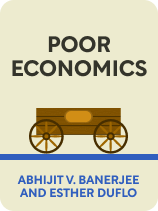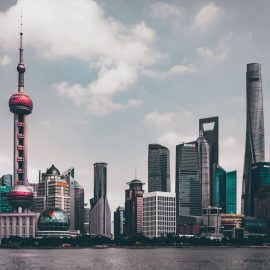

This article is an excerpt from the Shortform book guide to "Poor Economics" by Abhijit V. Banerjee and Esther Duflo. Shortform has the world's best summaries and analyses of books you should be reading.
Like this article? Sign up for a free trial here .
What are the main causes of malnutrition? Why are the poor malnourished in spite of the efforts of policymakers?
In Poor Economics, MIT professors Esther Duflo and Abhijit Banerjee discuss a well-known problem among the poor: malnutrition. They argue that this problem doesn’t stem from lack of food per se, but from lack of nutrition. In other words, the poor are not starving for calories, they are starving for nutrients.
Here’s what MIT professors Esther Duflo and Abhijit Banerjee have to say about the causes of malnutrition amongst the poor.
Why Are the Poor Malnourished?
According to Esther Duflo and Abhijit Banerjee, the authors of Poor Economics, policymakers assume the poor are malnourished because they don’t get enough calories, either because they can’t afford to buy enough food or because not enough food is available. For this reason, many programs focus on getting more calories to the poor in the form of carbohydrate-based staples, like rice.
However, Duflo and Banerjee believe this approach is misguided: In reality, the poor don’t need more food—they need more nutritious food. The evidence shows that even when the poor have easy access to calories, they still often suffer from malnutrition because many of the foods they eat lack key micronutrients. This leads to health issues.
| Global Food Insecurity on the Rise Duflo and Banerjee are right to point out that nutrient deficiencies are a primary cause of malnutrition in the poor. However, it’s important to note that in certain dire circumstances, access to any food is limited for the poor. This is especially true in countries facing major environmental or political disruptions. The most recent report on food crises throughout the world indicates this in alarming detail. Regional conflicts, extreme weather events, and droughts have left 193 million people in a state of food crisis. In this state, families and individuals simply don’t have enough resources to meet their minimum calorie needs without selling off their belongings or depriving themselves of other necessities. Food insecurity is a complex problem that requires a multi-faceted solution and extensive international cooperation. |
The authors thus argue that access to nutritious food is less of an influence on the nutritional decisions of the poor than other reasons which lead them to make less-than-ideal choices about food, including:
1. They don’t know how important good nutrition is. Duflo and Banerjee argue that the poor haven’t been educated about nutrition in the way people in rich countries have: They simply don’t know how important micronutrients are and therefore don’t go out of their way to purchase fortified foods even when they’re available.
(Shortform note: Researchers have found that educating mothers of young infants on proper child nutrition resulted in improvements in the infant’s nutritional status. Results like this indicate that information is an important component of reducing malnutrition.)
2. They eat based on taste. Like most people, the poor prefer foods that taste good to them, write Duflo and Banerjee. Much of this food consists of simple carbohydrates, such as rice, processed grains, and sugar—all of which provide little nutrition. The poor aren’t inclined to eat something nutritious if they don’t find it tasty.
(Shortform note: Scholars argue that altering people’s eating preferences is an important way to improve global nutrition. They see three main avenues for changing consumer diets: First, make healthy food more appealing by labeling it attractively or making it cheaper through subsidies, for instance. Second, make it easier to get healthy food by making more such foods available or by displaying them more prominently. Finally, make healthy eating socially normal, as opposed to countercultural, by, for instance, not separating healthy foods from unhealthy ones. A combination of such approaches can go a long way toward changing people’s dietary habits.)
3. They prioritize other aspects of their lives over nutrition. Duflo and Banerjee find that the poor often willingly scrimp and save for non-food items like TVs but don’t make smaller sacrifices to ensure they get healthier foods. They believe the poor value diversions and entertainment because their daily lives are monotonous and hard—they need something to look forward to.
(Shortform note: Some economists argue that using entertainment to drive behavioral changes is an effective way to improve the lives of the poor. In particular, they note that the internet and TV are good ways to deliver important information, show good role models and affect people’s preferences, and direct how people use their time.)
According to Duflo and Banerjee, these are the reasons why the poor are malnourished—the common belief that the poor simply can’t eat enough food to be healthy is mistaken.
| What Are the Main Causes of Malnutrition? — Not a Lack of Food. Experts agree with Duflo and Banerjee that in most cases (barring environmental and political crises) there are enough calories available for the poor to avoid hunger. However, they emphasize that the poor typically don’t have access to enough fruits and vegetables to be healthy. It’s important to note that this lack of access is a factor outside of the control of the poor. No amount of changing their tastes, priorities, or knowledge of nutrition will give them more access to fruits and vegetables. During the Covid-19 pandemic, it became clearer that access to good food is a key factor contributing to the undernourishment of the poor. After having remained stable from 2014 to 2019, the number of malnourished people in the world increased in 2020 and remains high as pandemic-induced supply issues have exacerbated the difficulty the poor have in getting good food. The number of undernourished people in the world now (768 million) is significantly higher than it was at the time of this book’s publication in 2011 (635 million). The malnourishment of the poor is still as relevant today as it was then, so it’s important to develop as full a picture of the situation as possible: While Duflo and Banerjee’s findings remain significant, policymakers still have to work to increase the amount of good food available to the poor. |

———End of Preview———
Like what you just read? Read the rest of the world's best book summary and analysis of Abhijit V. Banerjee and Esther Duflo's "Poor Economics" at Shortform .
Here's what you'll find in our full Poor Economics summary :
- A look at how some people live on less than 99 cents per day
- An analysis of how the poor live and how policy interventions affect their lives
- The four key insights Duflo and Banerjee offer about poverty






